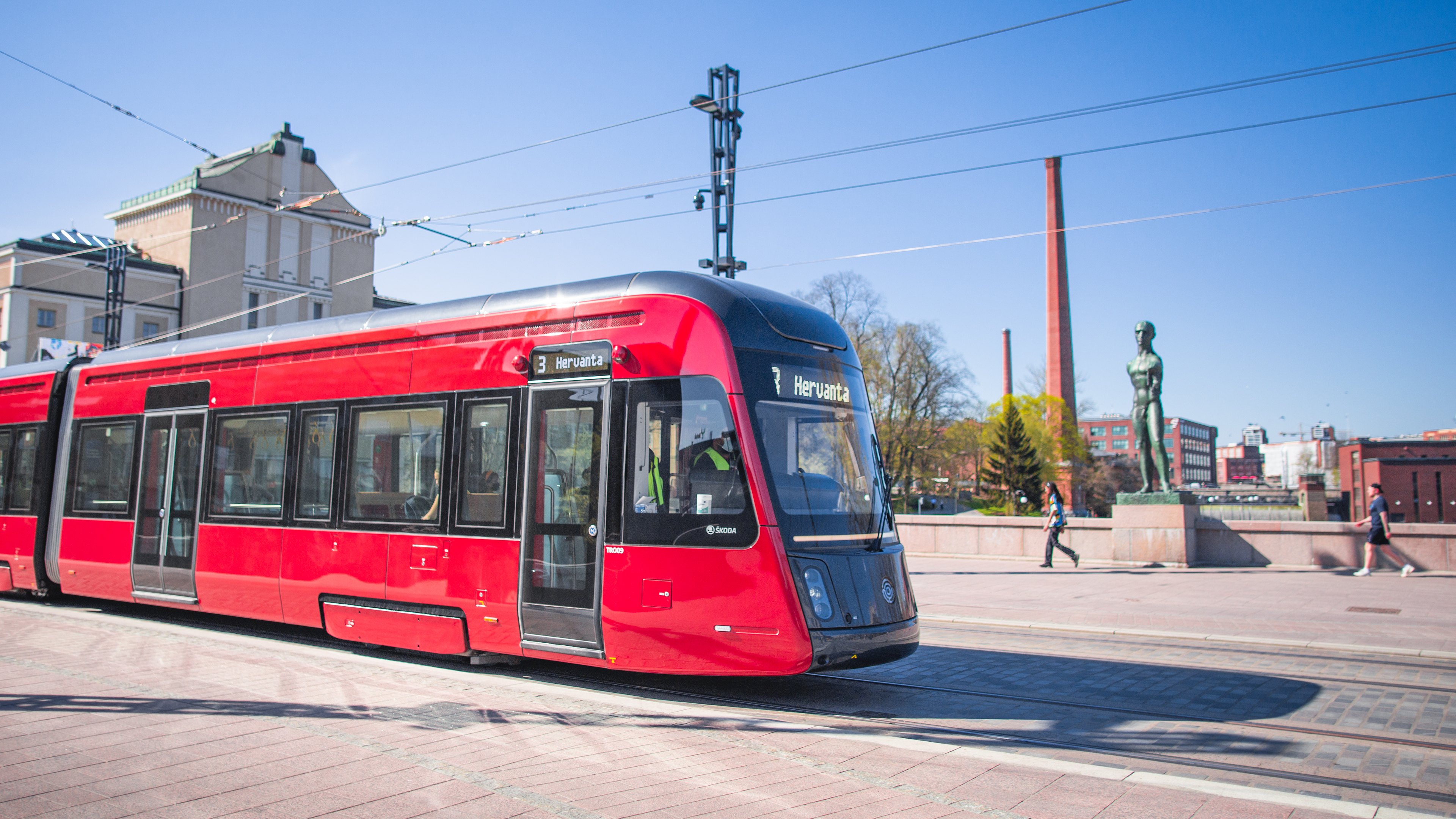Investments in cleaner energy production in Tampere start to show: climate emissions reduced by a fifth

Confirmed data on regional climate emissions in Tampere show the impact of large investments in district heating. The introduction of the Naistenlahti 3 biopower plant and an electric boiler for district heating reduced emissions in the whole city area by 15% in 2023. Around 86% of Tampere residents live or work in properties heated by district heating.
According to a CO2 calculation produced by Sitowise Oy, Tampere's overall greenhouse gas emissions decreased by 22% from 2022 to 2023, totalling 656.4 kilotonnes of carbon dioxide equivalents (ktCO2e) in 2023, compared to 843.8 ktCO2e in 2022. Compared to 1990, climate emissions have decreased by 50%.
CO2e, or carbon dioxide equivalent, is a quantity that converts the warming effect of different greenhouse gases into an equivalent amount of carbon dioxide.

Investments in improved technology make a difference
When looking at emissions by adding up the ways in which buildings are heated, heating remains the largest emitter. According to data from district heating producer Tampereen Energia and Sitowise's preliminary data, emissions from district heating will continue to fall in 2024. Sitowise expects district heating emissions to fall by some tens of kilotonnes of CO2 in 2024.
In 2024, 74% of district heating in Tampere was produced with renewable fuels. The electric boiler replaced a large amount of fossil fuels, reducing emissions.
– The city's efforts and investments in better technology, which also has an impact on emissions, are making a difference, says Laura Inha, Climate and Environment Manager of the City of Tampere.
In 2024, Tampereen Energia also continued the implementation of district heating without combustion and started building new electric boilers and a district heating battery.
– The system recovers waste heat, the use of wind power is timed according to weather conditions and the use of biomass as a fuel provides stable, affordable energy, says Jukka Joronen, Tampereen Energia's Director of Energy Markets.
The energy company also plans to use the benefits of its high volumes to reduce emissions from transport in the future. Biomass combustion produces biogenic carbon dioxide, which the hydrogen economy needs.
Second largest emissions from road transport
The second largest climate emissions in the region were from road transport. Emissions remained almost unchanged in 2023 compared to a year earlier. In 2023, emissions were 204.4 ktCO2e, compared to 206.6 ktCO2e a year earlier.
Transport emissions are influenced by the number of commuters and their travel choices. Migration will increase the number of commuters and traffic in the city. The completion of the new phases of the tramway and other measures to promote sustainable mobility will reduce emissions by allowing city dwellers to choose to use smoother public transport, cycle or walk. Sitowise expects some reduction in road transport emissions in 2024.
The CO2 report produced by Sitowise Ltd takes into account climate emissions generated mainly in the geographical area of the city, as well as climate emissions from heat and electricity production consumed in Tampere (so-called Scope 1 and 2 emissions). Many indirect emissions (Scope 3) produced by communities and municipalities are excluded from this calculation.



